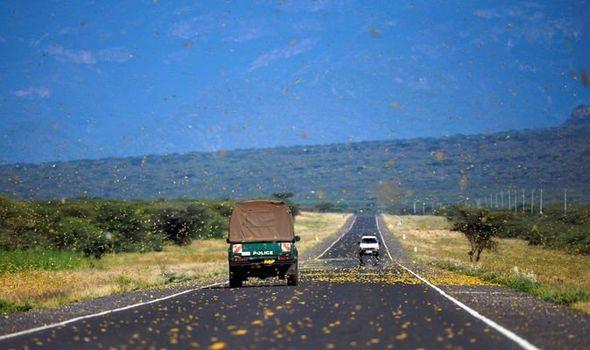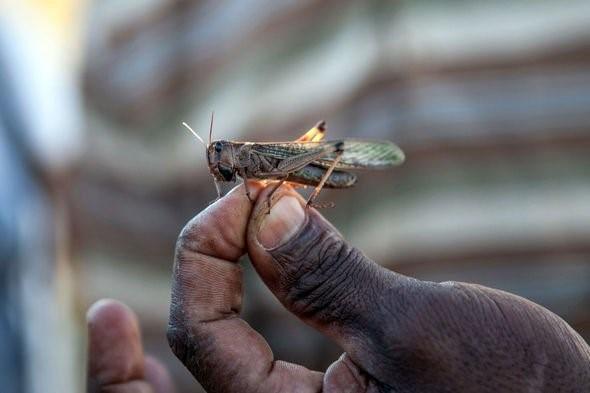The United Nations (UN) issued a statement this week warning it is the most severe infestation Kenya has seen in 70 years. Swarms of locusts the size of entire cities are currently sweeping across Kenya, Ethiopia and Somalia, with some as big as 37 miles long and 25 miles wide. Dr. Rick Overson, research scientist, both of Arizona State University, said the locust population could increase populations 20-fold meaning numbers could be 400 times the current size by summer. He told Newsweek: “Outbreaks of the desert locust go through phases of recession and plagues, both of which can play out over scales of years and decades and are difficult to predict. “The horn of Africa historically saw outbreaks of even greater magnitude through the mid-1950s.”
Doug Yanega, senior museum scientist of the Entomology Research Museum, University of California, Riverside, said: “It’s a humanitarian crisis more than an economic hardship, given how marginal the agriculture tends to be in the regions affected. These swarms are threatening people’s food supplies and livelihoods. Basically, there are a lot of hungry people who will be going even hungrier when their crops are annihilated.”

Desert locusts are one of the most destructive pests and risk wrecking havoc for crops in Africa. Dozens of countries are on alert following a biblical-scale invasion of locusts the UN has described as “unprecedented” and “devastating”. The swarms of the food-devouring insects could grow 500 times bigger by June according to the astonishing UN Food and Agricultural Organisation (FAO) report.
Apocalyptic footage from the affected regions has shown the billions of crop-eating locusts which have travelled in 930 square mile swarms. Videos of the locust swarms reveal dense clouds of insects bombarding crops across East Africa as people turn to flee in what has been called “the most serious outbreak of desert locusts in 25 years”.

The UN has pleaded for international help to fight huge swarms of desert locusts sweeping through east Africa. A spokesman for the UN’s Food and Agricultural Organisation (FAO), called for aid to “avert any threats to food security, livelihoods, malnutrition”. Ethiopia and Somalia have similarly not faced an infestation on this scale for 25 years while South Sudan and Uganda are also at risk if the swarms continue to spread. UN officials have declared that the only option left was “aerial control” - spraying insecticide from aircraft. The UN report said: “The current swarms represent an unprecedented threat to food security and livelihoods in the Horn of Africa.”
Africa also experienced torrential downpours in January. This was also said to have been rare.